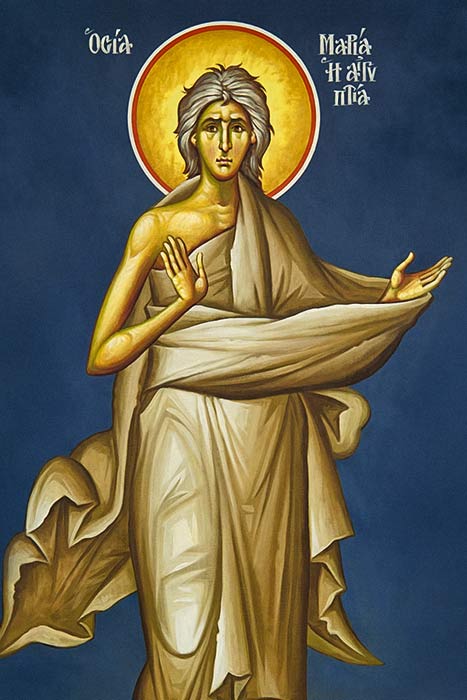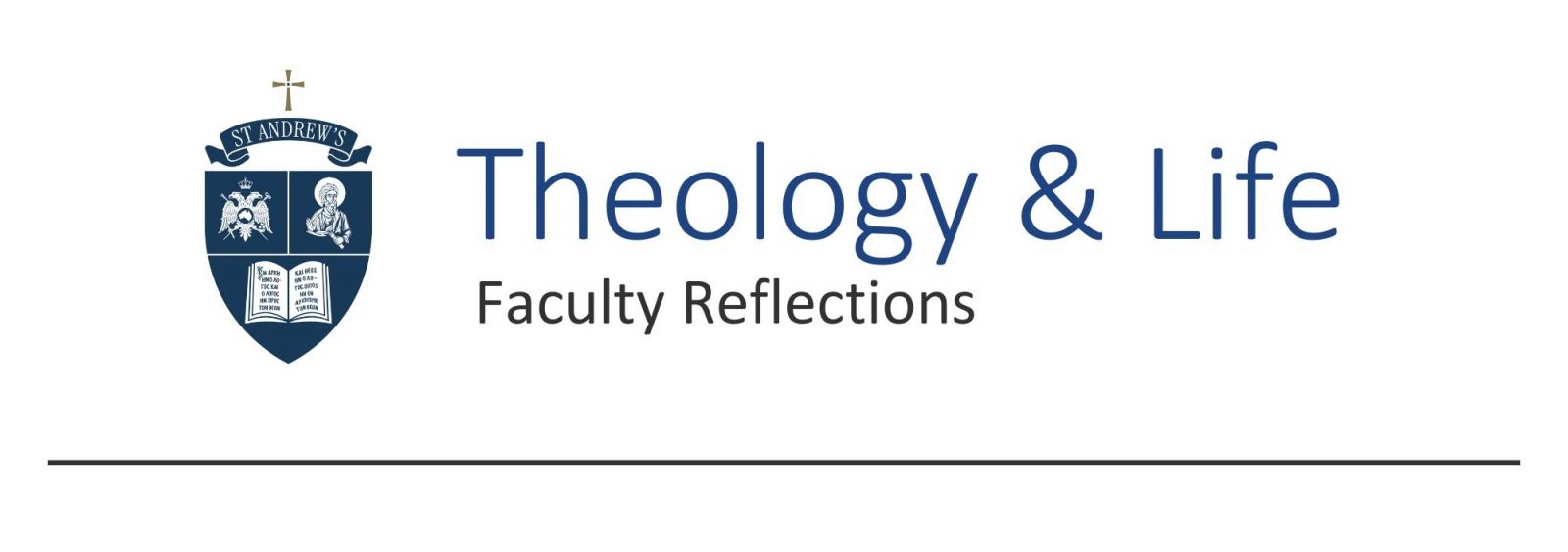- Home
- About us
- Students
- Courses
- Research
- Library
- News & Events
- Gallery
- Contact
- Our Blog
Latest News

St Mary of Egypt:
An Icon of Repentance and Great Hope for all the World

by Assoc. Professor Philip Kariatlis (Sub-Dean)
On the 5th Sunday of Holy and Great Lent, the Church presents before us, for reflection, a remarkably important and deeply revered saint in the history of the early Christian Church—St Mary of Egypt (5th century AD). Her life was radically changed and profoundly transformed through her encounter with the life-giving Cross of our Lord. She continues to be remembered and venerated today as one of the most striking icons of repentance, a living testimony to the transforming power of God’s grace, and an enduring confirmation of Christ’s immeasurable love for all people throughout all time.
From the records of her life available to us (St Sophronios, Patriarch of Jerusalem in the 7th cent.) we learn that from a young age, Mary’s circumstances in Alexandria had led her to surrender herself to a life of recklessness and indulgence in sensual pleasure; a life marked by degeneracy and utter lewdness. In pursuit of this sensual and self-gratifying life, we are further told that one day she decided to board a boat filled with pilgrims traveling to Jerusalem to venerate the Cross of Christ. Her motives, of course, were deceitful, and her intentions far from honourable. And yet, even though her actions were driven by cunning selfishness, the providence and actions of Christ towards her—and indeed to all people— were steadfastly noble and princely pure.
Upon her arrival in Jerusalem and desiring to enter the Church of the Holy Sepulchre—perhaps, out of curiosity and intrigue—she found herself unable to go in, blocked by an invisible force. In one of the hymns of the Orthros Service of the day, we hear, “Like a wall, you were prevented from beholding the august holy sites of Christ.” Paradoxically, this hindrance marked the beginning of her new life. As the same hymn continues, “For gazing at the icon of the ever-blessed Mary, the one who gave birth to God, you condemned your every transgression… and then with confidence, you adored the all-precious Cross of Christ.” In realising the depth of her sin, in that moment of utter brokenness and repentance, the power of the Cross not only dissipated her weakness and proclivity towards any sensual and salacious pleasure but opened the way to a life of excellence and righteousness.
We are further told that she crossed the Jordan River with very little food, entering that same desert where St John the Forerunner had once lived several centuries earlier. For seventeen whole years, she struggled intensely, subduing the passions with formidable fortitude, mourning the life she had once lived in Egypt, but at the same time, certain of God’s unbounded love for all people, manifested most clearly and unequivocally on the Cross. Her deep and unfeigned repentance drew the grace of the Holy Spirit, raising her out from a life of indulgence and into one of angelic purity. Indeed, in this state of spiritual rebirth, another hymn of the Church tells us that she “shone forth to such an extent that she was able to fly across the waters… and levitate above the ground when she raised her hands to God in prayer.” Through her repentance—specifically, her total reorientation toward Christ—she was not only forgiven, but utterly transfigured, becoming a “chosen vessel” (cf. Acts 9:15) and a shining beacon of God’s liberating love for all people.
In holding St Mary of Egypt in such high esteem, the Church wants to console and comfort us, as a mother to her children; to strengthen and revitalise us, us as we proceed on our journey to encounter Christ, perhaps a little wearied throughout all that Holy and Great Lent has required of us. Indeed, as we near Christ’s Passion and Crucifixion, the Church wants to echo most clearly the life-saving truth that no one is beyond redemption, and that no life is so broken that it cannot be made whole. In the person of St Mary of Egypt, we are reminded of our Lord’s boundless and immeasurable love for all people; namely, a love so infinitely great that it can redeem and reconcile us all. Moreso and most importantly, the Church gently prompts us to recall that on the Cross, our Lord’s outstretched arms drew all people to Himself, reconciling and gifting us all with a life which surpasses and is victorious over the worthless and nullity of death.
In commemorating this great saint, the hope and prayer of the Church is that we too may experience the joy of Christ that St Mary of Egypt experienced in her encounter of the Cross. A joy so radically life-changing and so incomparably greater to any fleeting delight and pleasure of this world, that led her into the vastness and endless radiant rapture of our Father’s heavenly kingdom; a kingdom that, according to one of the prayers of Thanksgiving after Holy Communion, “the sound of festival is unceasing, and the pleasure is endless of those who behold the indescribable beauty of [His] countenance.”
May the joyous message of the Church, through the person of St. Mary of Egypt, give us all the conviction and hope, despite our captivity to sin and the unbearable and inevitable suffering that results from this; despite the daily trials and endless tribulations brought about by our own shortcomings, or by the evil in this world, that we too, through our repentance, may come to experience first-hand the redeeming power of the Cross; this Symbol which truly offers eternal life to all, making us partakers of God’s eternal kingdom. May we, too, come to realise, in the person of St Mary of Egypt that the power of the Cross lies not only in its forgiveness of our sins, but infinitely greater, in its opening of our hearts to the unbounded love of God, our heavenly Father.



.png)